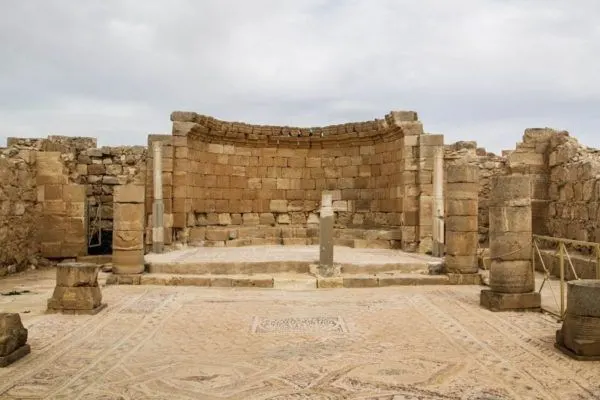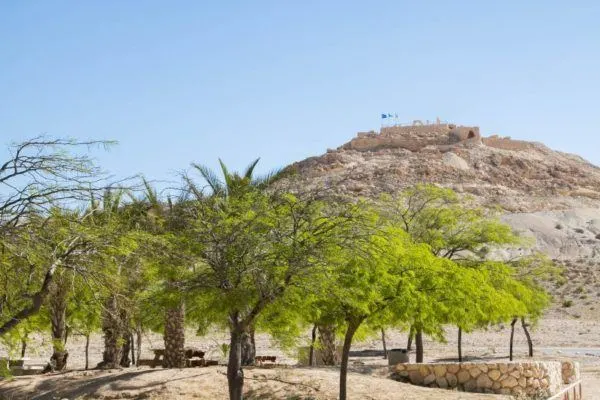Israel’s Negev Desert holds some ancient secrets. Forgotten cities of the silk road, lay in ruins, waiting for you to come and enjoy.
Deserts have always seemed mysterious and exotic to me. Growing up I devoured stories of exploration all over Asia and Northern Africa, exotic caravans, and women wearing gauzy belly dancing outfits. I drooled over the idea of having my own camel to take care of as my Bedouin family stops for the night and pitches their sprawling tent with luxurious carpets and pillows piled all over the floor.

Therefore it was a foregone conclusion that when we traveled to Israel we knew right away that we would have to explore some of the ancient cities that used to line the incense and spice route. Since we were driving, we didn’t think it would be that out of the way. In this we were wrong.

The Incense Route
The incense route through Israel is around 150 kilometers long, and it’s quite a distance from the other main Israeli sights. It starts on the Jordanian border and goes up through Moa, Avdat, Shivta, and Haluza. The caravans used the incense route for over 700 years.
The long drive didn’t stop us, though, since we love a good road trip and getting out into the back country always affords us the opportunity to see farms, sheep and goat herders, and the Bedouins who still roam the dunes to this day.

The towns with a caravanserai were spaced out so that each stop was one-day’s journey and were equipped to house and feed the whole party as well as keep them safe from marauders and thieves that stalked the rich caravans.
Frankincense and myrrh are only found in one region of the world, modern day southern Arabia, and were worth more than their weight in gold. Many religions used the incense to burn the prayers up to the heavens, while the royalty and wealthy rich ladies used them for their scents and perfumes.
Because of the riches that these two resins brought to the Nabateans, they completely transformed the culture from what was traditionally an agricultural and pastoral people to a more mercantile economy.The four Israeli towns that were part of the 2,000 kilometer route still show how they were able to conquer the desert.

We had already visited and loved the Nabatean capital of Petra where we hiked up to the monastery and talked with the people who still live in the park. So, visiting some of the four UNESCO inscribed Negev towns filled us with anticipation. We only had time to visit two of them, so we chose Mamshit and Shivta.

Mamshit
Around 2000 years old, the Nabateans built Mamshit at the same time as Shivta as an economic city. It wasn’t directly on the incense trail, but it was a crossroad of the trade routes, and the city became very wealthy.
Run by the National Parks system, today you can see still see the wealth. When you first enter you will come to the caravanserai where the merchants would house their animals at least overnight. Both the humans and animals required lots of water, which although difficult in the desert the Nabateans found a fix. They harnessed the nearby river water, by making a reservoir.

Unfortunately during the conquest, the city was destroyed, so it can be harder to see how it looked in ancient times.
Some things to see today are:
- A city tower and gate
- 2 caravanserais
- A noble’s house

Shivta
The city got its beginning about 1BCE and had a population made up of both Romans and Nabateans. The Nabateans brought Christianity to the city, and they erected two big Byzantine churches which you can still see today. Shivta was a modern city, with an innovative water cistern that turned the desert dryness into a sort of oasis, which was good for business.

Shivta, unlike Mamshit, was not conquered and the poeple left of their own accord. Therefore the city is in much better repair, and it’s easy to see how it looked 2,000 years ago. This probably explains why Jim and I liked it so much better than Mamshit.
Today Shivta has been turned into a National Park, and it’s open during daylight hours. It’s free to enter.
Things to see in the ancient city are:
- The churches
- Oil presses
- Baptismal Bath
- Gate to the City
- Some nobles houses
- The Pools
- A Mosque
- The Dovecotes

Mamshit and Shivta were completely different from each other and surprisingly intact. Luckily there weren’t many tourists around which gave us the opportunity to wander, shoot plenty of photographs, chase geckos, and imagine what it would have been like to arrive at these oases in the desert after hours and hours of slow-paced camel walking.
Where We Stayed
We were told by one of the previous hoteliers that we stayed with to book a room at Boker Valley Farm near Sde Boker. We always follow locals advice, because they know the best places to go. In this case, the rooms are more than sufficient, but what we really loved was the sunset in the desert as we watched it from the hot tub. Also on the premises is one of the pretties, best stocked wine store. We couldn’t help but indulge.
Where We Ate
While we were staying at the farm, of course we asked the best place to eat in the vicinity and were told the Kornmehl Farm, only a few minutes down the road. Again, there was no question, we ate there…twice. The farm is a working goat farm and is known for their amazing goat cheeses which they incorporate into their dishes. They also have a shop on the premises where you can buy fresh yogurt, cheeses, and some prepared products like their pickled cucumbers, granola, and even soap. The food was amazing.
If you are looking for more things to do in this part of Israel, you might want to head to Ramon Crater and do some amazing hiking.
For more information:
Conclusion
Even though we didn’t get to experience the belly dancing, we did hear the tinkling of bells and see a farmer feeding his camels, and we loved seeing the night sky sprinkled with millions of stars at night. We thoroughly enjoyed our time in the Negev Desert. The views, sunsets, people, and food was amazing, so we were happy to be traipsing about old ancient city ruins during the hot days. Especially if you are driving around Israel, head to the Negev.
Author Bio: Corinne Vail is a travel photographer, food lover, and a perpetual traveler who has been travel writing for over 14 years. For many years she lived overseas in Germany, Japan, Turkey, South Korea, and the Netherlands teaching the children of the US. military. She’s visited over 90 countries, and she’s not stopping anytime soon.


Voyager
Wednesday 9th of March 2016
Negev sounds so fascinating, would love to visit some day.
Corinne Vail
Wednesday 9th of March 2016
Voyager, It really is.I love a desert landscape and one with ruins...well, it's magic!
Shobha
Sunday 28th of February 2016
I've not heard about Negev. Definitely going on the bucket list whenever we get to visit Israel. So much to see and do in that country we want to have at least 2 weeks there.
Corinne Vail
Sunday 28th of February 2016
Shobha, Yes! At least two weeks. There is so much to see. We did it in nine days and another week would have been perfect.
Taylor
Wednesday 24th of February 2016
What an amazing spot! And great photos as well! We'd say it's well worth the trip back to Israel to see Negev. Thanks for sharing it!
Corinne Vail
Thursday 25th of February 2016
Taylor, I would love to return to Israel as well...always more to see.
Sri Kri
Tuesday 23rd of February 2016
Thanks for the virtual tour.Though the place looks desolate it stills have the beauty.Lovely clicks.
Cheers, Sriram & Krithiga
Corinne Vail
Tuesday 23rd of February 2016
Sri Kri, Thank you; we really enjoyed exploring all the ruins and photographing the landscapes.
Elaine Masters
Saturday 20th of February 2016
Can't imagine I'd ever get there but how wonderful to see your pictures. Anyplace that is marked by historical incense would be a winner. Looks like your explorations were well worth the effort and time.
Corinne Vail
Sunday 21st of February 2016
Elaine, We loved every minute of the Negev. It's beautiful and desolate. My kind of place!